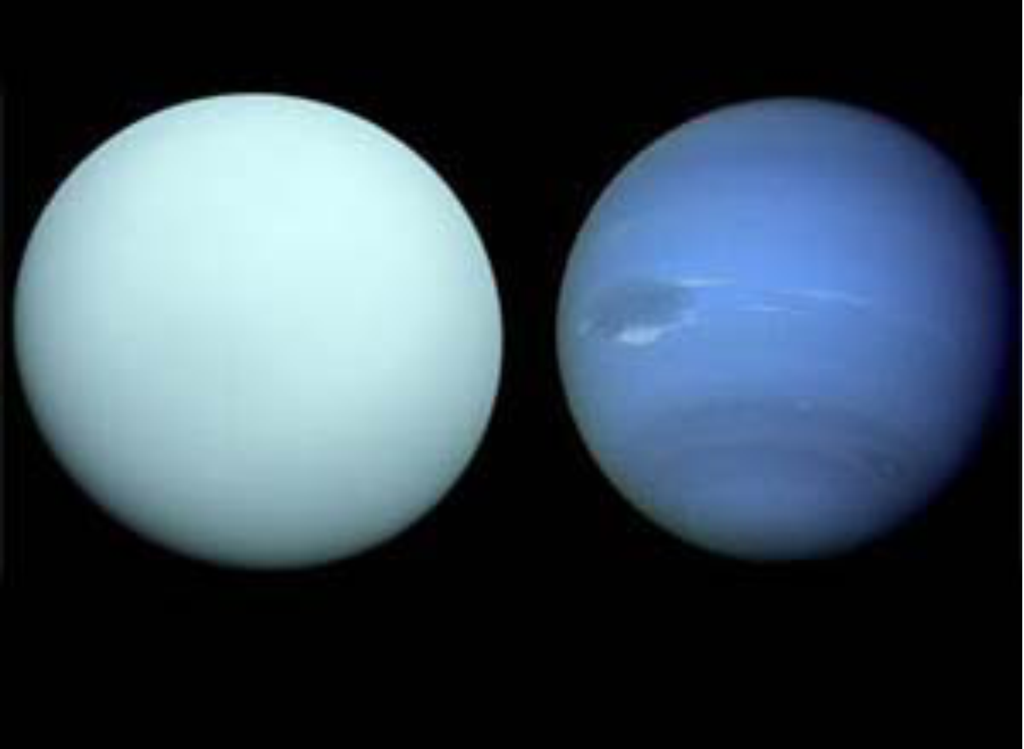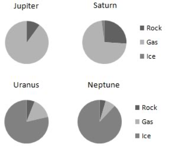Sign up for FlowVella
Sign up with FacebookAlready have an account? Sign in now
By registering you are agreeing to our
Terms of Service
Loading Flow


The Ice Giants: Uranus and Neptune
______________
__________________

So named for their greater composition in ices than gases (technically water-ammonia-methane fluids and other ices) these planets are considerably smaller in mass, volume, and density than the gas giants. They are blue due to methane's absorption of red light.
Despite being 63 times larger in volume than Earth, it's actually quite light for its size. A density that is 4x smaller than Earth's, and 86% of the gravity, a 100 lbs person would weigh 86 lbs.
Neptune can only fit 57 Earths in comparison. However, as a planet it has the closest gravity to Earth's, only 17% larger.
The Great Dark Spot of Neptune is roughly the size of Earth. However, the winds blow 2,400 km/h, the fastest in the whole system. That's 5 times faster than Earth's record holder of 408 km/h.